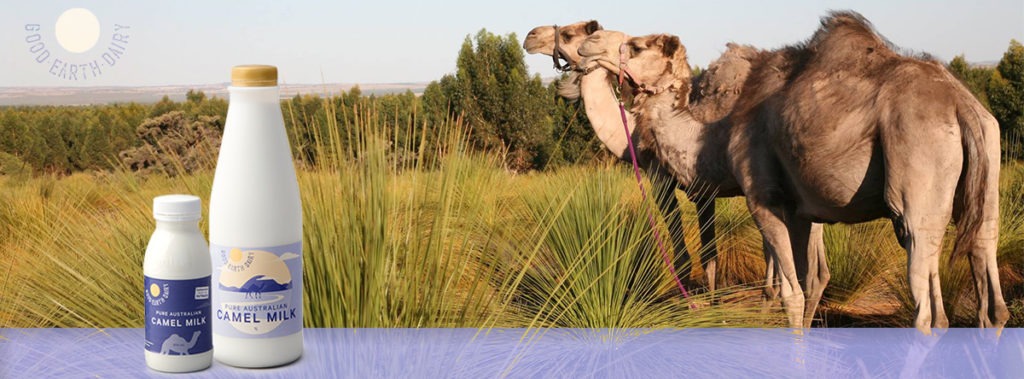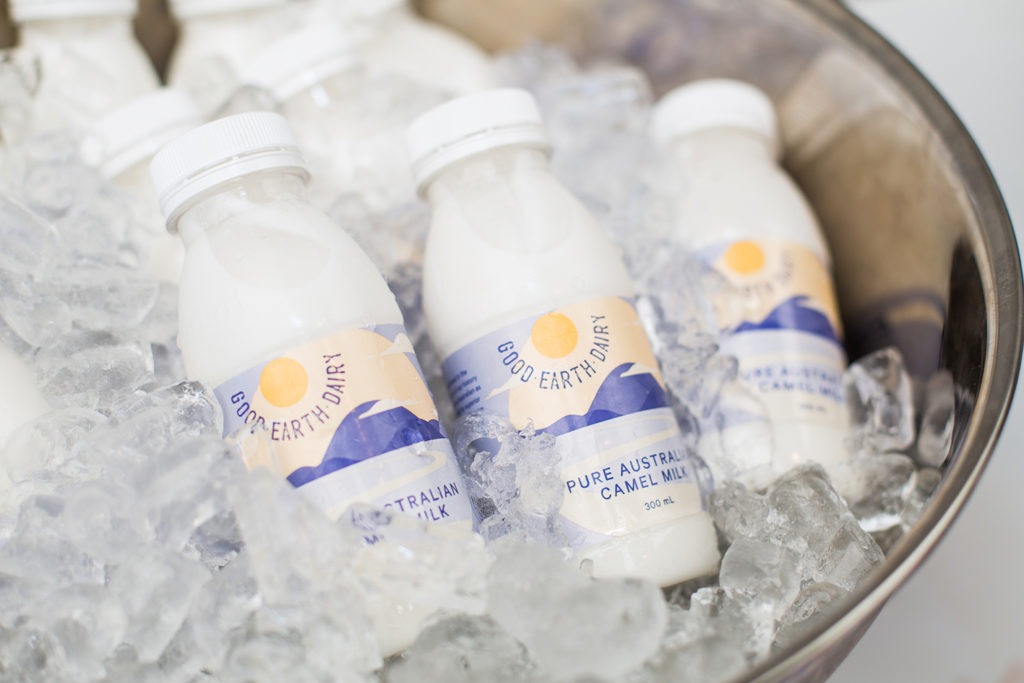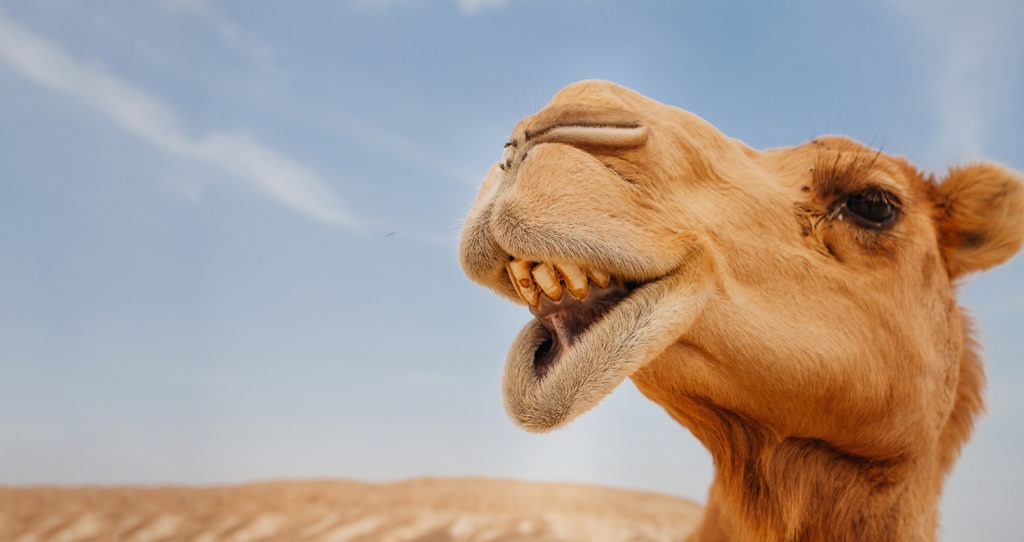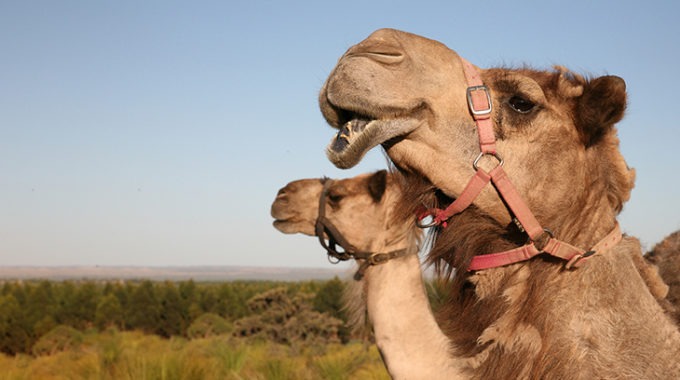Camel’s milk: an untapped resource
Every day is hump day at Good Earth Dairy. Western Australia’s first commercial camel milk dairy was created to take advantage of a major natural resource that’s historically been ignored here – feral camels. Camel’s milk is a highly nutritious food that’s been embraced by many other countries for hundreds of years, but in Australia, it’s still a fairly new idea.
One of the reasons why camel’s milk is less readily available here – and why few people choose to produce it – is that the cost of camel milk production is far higher than that of cow’s milk, making it much harder to turn a profit.
“For one, you’ve got to deal with feral camels,” explains Good Earth Dairy co-founder and CEO Marcel Steingiesser. “Logistically they’re not easy to just put on a truck and take somewhere. Secondly, you have to wait 13 months for delivery of the calf before you actually get any milk, compared to around nine months for a cow.
“Additionally – and this also makes camel’s milk more ethical – we don’t separate the mum and the calf like you do in other dairies. You actually have to keep the calf with its mum to maintain the flow of milk. So we’re sharing the milk with their calf.”

An udder like no other
But by far the largest impact on the cost of production is that camels will only produce around five litres of milk a day. This is opposed to the 30-odd litres a dairy cow will produce each day. It’s because camels haven’t been industrialised like dairy cows, Steingiesser explains. Also, there’s no automated camel milking process.
“Camels have an udder with four teats, just like a cow,” Steingiesser says. “But because they haven’t been genetically improved like dairy cows, they’re not all the same shape. This means milking a camel is more labour intensive.”
However, after five years and over $4 million, Good Earth Dairy has developed a way to produce camel’s milk at a significantly reduced cost in comparison to market prices. It’s now aiming to enter the $56 billion global infant formula market, which is expected to grow to $100 billion by 2025. The business has launched an equity crowdfunding campaign to help them reach that goal, with the aim to raise $1.2 million.

Why camel’s milk?
Camel’s milk is sometimes touted as a “superfood”. It certainly contains some very interesting properties that could potentially offer a range of health benefits.
“There’s a particular whey protein called beta-lactoglobulin,” explains Susan McLeod, a nutritionist and lecturer in Human Nutrition at La Trobe University. “This is a protein in cow’s milk that’s a really common dairy allergen. But it doesn’t exist in camel’s milk.
“Camel’s milk also contains anti-microorganisms. They have the potential to fight infections or bacteria. Some of these are common in other milk forms as well. It’s certainly in human breast milk, particularly in colostrum, which comes through in the first couple of days.”
In some countries, camel’s milk is commonly used if someone has an upset stomach or diarrhoea. McLeod says that these anti-microorganisms could be the reason for this. Camel’s milk is also higher in calcium and lower in saturated fat than cow’s milk. There have even been some studies to suggest that camel’s milk could help to improve everything from blood glucose levels in type 2 diabetics to autism in children. However, McLeod cautions that some of these studies have been small. Much more research needs to be done before any definitive links can be established. She also warns that camel’s milk should never be given to infants as a replacement for breast milk.
“But definitely, I can see that nutrient profile playing a role in why it would be a really good choice to use in the development of an infant formula,” she says.

A different breed
So, what does it taste like? According to Steingiesser, camel’s milk is the most similar animal milk to cow’s milk. Good Earth dairy recently blind-tested a camel milk product on consumers, and all the participants in the study thought they were drinking cow’s milk.
“But the whole process is critical to the palate,” he says. “We’ve tried the camel milk from our competitors over east, and we think it doesn’t taste as nice. Obviously we’re biased. But I think it’s our technology and the processing and the handling of the milk, as well as the husbandry of the animals that makes a difference.”
Caring for feral camels certainly presents a different set of challenges to what you would find on a dairy farm. But Steingiesser is keen to dispel one very big myth. Camels don’t spit.
“Alpacas spit, not camels,” he says. “The only thing that’s similar to spitting is that when camel bulls are rutting. Part of their mating ritual is that they will salivate and blow some of that salivation out. They’re not actually spitting at people.”

Risky business
Camels’ personalities also vary widely, and they are rarely as docile as Daisy the dairy cow.
“They can get aggressive,” Steingiesser admits. “They’re not used to humans. So, unlike cows, they don’t turn and run away from you; they’ll actually turn and face you and charge if they feel threatened. So it can be a hazardous activity if you don’t know what you’re doing!”
However, the methods that Good Earth Dairy employs mean the camels usually calm very quickly. Beyond the odd kick here and there, they tend to be quite happy and relaxed.
“It’s well and truly a five-star hotel we have for them,” Steingiesser says with a chuckle.

Next gen dairy?
Steingiesser believes that camel’s milk could well become a massive disruptor to the dairy industry, particularly as companies like Good Earth Dairy continue to develop new, more cost-efficient means of production.
“It has more nutrition than cow’s milk,” Steingiesser says. “And it’s so much easier on the gut. The only thing that really remains as a barrier to camel’s milk becoming a mainstream product is the cost, which is why we’ve done what we’ve done.
“It’s never going to be as cheap as cow’s milk, but I think cow’s milk is too cheap. Prices should be higher to help dairy farmers. But it will still be more affordable. We see it going mainstream. Not only for infants, but also as a regular beverage. It’s a case of putting the right product out there that will be happy on people’s guts, palates and pockets. By ticking those three boxes, we see it having a huge impact. This is a global opportunity.”









